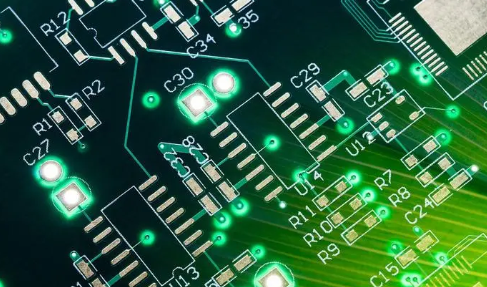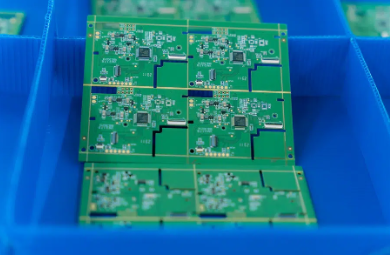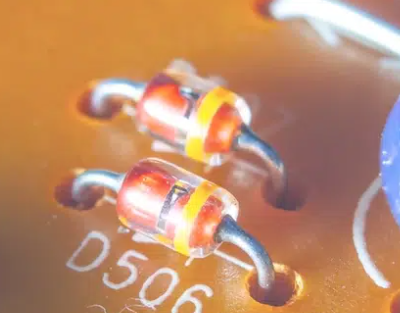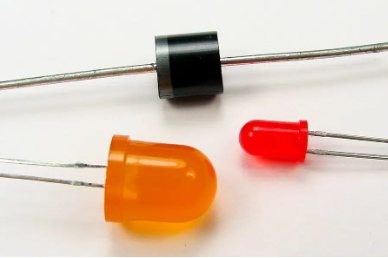How to Measure a Capacitor with a Multimeter and Five Operating Errors to Avoid
A multimeter is a commonly used electrical testing instrument that measures electrical parameters such as voltage, current, resistance, and capacitance. When measuring capacitance, a multimeter can determine the quality of a capacitor by measuring its capacitance value, dissipation factor, and equivalent series resistance.

Below are specific methods and steps on how to use a multimeter to measure the quality of a capacitor, as well as five operating errors to avoid:
1. Select the Capacitance Measurement Range: Set the multimeter to the capacitance measurement range, typically marked with “C” or “CAP.” Choose the appropriate measurement range based on the capacitor’s rated capacitance value to avoid insufficient accuracy or overload.
2. Connect the Capacitor: Connect the two terminals of the capacitor to the multimeter’s test leads, paying attention to the polarity. If the capacitor’s polarity is unclear, connect the test leads arbitrarily since capacitors are non-polar components.
3. Measure Capacitance Value: Press the multimeter’s test button, wait for the capacitor to charge and the measurement to complete. The multimeter will display the capacitor’s capacitance value, usually in farads (F). If the capacitor’s capacitance value is close to the rated value and meets the measurement accuracy requirements, the capacitor’s quality is relatively good.
4. Measure Dissipation Factor: In the capacitance measurement range, the multimeter can also measure the capacitor’s dissipation factor, typically represented in the form of tangent values. The dissipation factor reflects the proportion of energy loss inside the capacitor, indicating its degree of loss and quality. If the dissipation factor is close to zero, it suggests minimal loss within the capacitor, indicating good quality.
5. Measure Equivalent Series Resistance: In the capacitance measurement range, the multimeter can measure the capacitor’s equivalent series resistance, usually in ohms (Ω). Equivalent series resistance represents the total internal resistance of the capacitor, reflecting its internal resistance and quality. If the equivalent series resistance is small, it indicates low internal resistance within the capacitor, suggesting good quality.
When using a multimeter to measure capacitance, it is advisable to avoid disconnecting the test leads during the capacitor’s charging process to prevent high voltage and current, which could damage the capacitor or pose safety risks.
In summary, the quality of a capacitor measured with a multimeter can be judged by parameters such as capacitance value, dissipation factor, and equivalent series resistance. When conducting measurements, select the appropriate capacitance measurement range, correctly connect the test leads, and avoid creating high voltage and current to ensure the accuracy and safety of measurement results.
When measuring capacitance with a multimeter, avoid the following five operating errors:
1. Not Discharging the Capacitor Before Measurement: Ensure the capacitor is completely discharged before measuring capacitance. If the capacitor stores charge, it may cause current flow during measurement, resulting in inaccurate measurements or damage to the multimeter. Before measuring, short the two terminals of the capacitor for a period to ensure complete discharge.
2. Using the Wrong Measurement Range: Multimeters usually offer multiple capacitance measurement ranges. Selecting the wrong range may lead to inaccurate measurements or exceed the range. Choose the appropriate range based on the capacitor’s rated capacitance value. If the capacitor’s capacitance value is unknown, start with a larger range and gradually narrow it down for more accurate results.
3. Ignoring Capacitor Polarity: Capacitors are non-polar components and can be connected arbitrarily using test leads. However, some capacitors (such as electrolytic capacitors) have polarity. Incorrect polarity connections may lead to inaccurate measurements or damage to the capacitor. When connecting capacitors, pay attention to polarity markings and ensure correct test lead connections.
4. Signal Interference During Measurement: When measuring capacitance, avoid signal interference. For instance, avoid contact with other power sources or electromagnetic fields to prevent introducing interference signals that could affect measurement results. Additionally, ensure a secure connection between the test leads and the capacitor to reduce contact resistance and interference.
5. Neglecting Measurement Accuracy and Range: Different multimeters have varying measurement accuracy and ranges. When choosing a multimeter for capacitance measurement, consider whether its accuracy and range meet actual requirements. For higher accuracy requirements, select a more precise multimeter or specialized capacitance measurement instruments.
在线留言询价

What is “component placement” in PCB?

15 Common PCB Circuit Effects
- 一周热料
- 紧缺物料秒杀
| 型号 | 品牌 | 询价 |
|---|---|---|
| RB751G-40T2R | ROHM Semiconductor | |
| TL431ACLPR | Texas Instruments | |
| CDZVT2R20B | ROHM Semiconductor | |
| MC33074DR2G | onsemi | |
| BD71847AMWV-E2 | ROHM Semiconductor |
| 型号 | 品牌 | 抢购 |
|---|---|---|
| TPS63050YFFR | Texas Instruments | |
| IPZ40N04S5L4R8ATMA1 | Infineon Technologies | |
| BP3621 | ROHM Semiconductor | |
| BU33JA2MNVX-CTL | ROHM Semiconductor | |
| STM32F429IGT6 | STMicroelectronics | |
| ESR03EZPJ151 | ROHM Semiconductor |
- 周排行榜
- 月排行榜
AMEYA360公众号二维码
识别二维码,即可关注


请输入下方图片中的验证码:
























